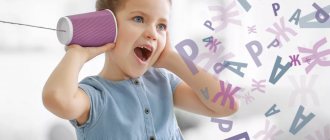Exercises to normalize breathing function
Exercise No. 1 Full breathing. Take a long breath through your nose. During inhalation, the abdomen “inflates”, then the chest expands. When you exhale (through the nose), on the contrary, the volume of the chest first decreases, then the stomach retracts.
Exercise No. 2 Chest breathing. Exhale. Take a long breath through your nose. At this time, the chest expands and the stomach retracts. When you exhale (through the nose), the stomach retracts.
Exercise No. 3 Abdominal breathing. Exhale. Take a long breath through your nose. At this time, the stomach protrudes. When you exhale (through the nose), the stomach retracts.
Exercise No. 4 The skill of full, extended exhalation. Walk at an average pace. Inhale and exhale only through the nose. Inhale for three steps, exhale for four steps. After three to four days, the duration of exhalation should be increased by one count (5,6, etc.)
Exercise No. 5 Inhale and exhale alternately through one nostril (press the second nostril tightly with your finger).
Exercises to normalize breathing function
Exercise No. 1 Full breathing. Take a long breath through your nose. During inhalation, the abdomen “inflates”, then the chest expands. When you exhale (through the nose), on the contrary, the volume of the chest first decreases, then the stomach retracts.
Exercise No. 2 Chest breathing. Exhale. Take a long breath through your nose. At this time, the chest expands and the stomach retracts. When you exhale (through the nose), the stomach retracts.
Exercise No. 3 Abdominal breathing. Exhale. Take a long breath through your nose. At this time, the stomach protrudes. When you exhale (through the nose), the stomach retracts.
Exercise No. 4 The skill of full, extended exhalation. Walk at an average pace. Inhale and exhale only through the nose. Inhale for three steps, exhale for four steps. After three to four days, the duration of exhalation should be increased by one count (5,6, etc.)
Exercise No. 5 inhale and exhale alternately through one nostril (press the second nostril tightly with your finger).
Exercises to normalize breathing function
Exercise No. 1 Full breathing. Take a long breath through your nose. During inhalation, the abdomen “inflates”, then the chest expands. When you exhale (through the nose), on the contrary, the volume of the chest first decreases, then the stomach retracts.
Exercise No. 2 Chest breathing. Exhale. Take a long breath through your nose. At this time, the chest expands and the stomach retracts. When you exhale (through the nose), the stomach retracts.
Exercise No. 3 Abdominal breathing. Exhale. Take a long breath through your nose. At this time, the stomach protrudes. When you exhale (through the nose), the stomach retracts.
Exercise No. 4 The skill of full, extended exhalation. Walk at an average pace. Inhale and exhale only through the nose. Inhale for three steps, exhale for four steps. After three to four days, the duration of exhalation should be increased by one count (5,6, etc.)
Exercise No. 5 Inhale and exhale alternately through one nostril (press the second nostril tightly with your finger).
"The horse stopped"
A good addition to exercise L is “the horse has stopped.” Tell the child that she was jumping and jumping and was tired, she decided to drink some water and eat. To do this, you need to close your lips and pronounce the sound “tpprrru”, like cabbies stopping harnessed horses. This is a very good exercise, it helps relieve tension, reduce the tone of the facial muscles and tongue.
It happens that babies cannot do it, their lips do not close. We need to show them how to pull them forward like a duck. If this doesn’t work, then try to lift the corners of your mouth up and forward with your hand, relax the muscles of the chin and upper lip. This does not always happen right away, especially with dysarthria. Don't be upset, just keep working and believe in success.
Diagnostics of articulation organs
If in the process of clicking saliva splashes, the lower jaw goes back, and the tongue does not stick well or does not stick at all or does not reach the palate at all, then a suspicion arises that in this case we may be talking about malocclusion, dysarthria or a shortened frenulum, or even combination of all these factors.
In this case, it becomes clearer what and how to look at the child in order to understand the degree of impaired tongue mobility, the level of dystonia in order to discuss with the parents further work to correct the defect and the need to attract help and consultation from other specialists: a neurologist, an orthodontist, an otolaryngologist .
Article:
A person is not born with the ability to speak, much less do it correctly and clearly.
If a child has problems pronouncing certain sounds, articulation gymnastics can help him. This is a set of exercises aimed at correcting these difficulties. In what cases is it sufficient, and when is a more serious approach required? What articulatory gymnastics exercises can you do at home yourself?
What is articulation gymnastics?
Children in the first years of life very often distort sounds that are difficult to pronounce, because their speech organs are still developing. There are practically no children who speak perfectly clearly right away.
For clear pronunciation of sounds, correct articulatory motor skills are necessary, that is, coordinated activity of the organs of the speech apparatus. If there are any problems in articulatory motor skills, they will always be reflected in sound pronunciation. When speaking, we use about a hundred muscles, including the muscles of the neck, chest, face, tongue, and soft palate. To control all these muscles, many more neurons are used than when walking and running.
Articulatory gymnastics is aimed at those organs that have muscles: tongue, lips (orbicularis oris muscle), facial muscles. But first of all it is intended for the language. The tongue is the main organ of speech, and developing and strengthening its muscles will help you pronounce all sounds more accurately and clearly.
Types of articulatory gymnastics
Such gymnastics can be active and passive. Most often, when talking about articulatory gymnastics, they mean its active form: the one that the child performs himself. It is suitable in cases where articulatory motor skills are not impaired, but simply need to be improved and practiced individual movements.
But there are also more serious situations, such as dysarthria, when the pronunciation aspect of speech is impaired as a result of damage to the nervous system, and the mobility of the speech organs is limited. In this case, it is extremely difficult or impossible for children to perform such gymnastics on their own. After all, their speech organs are not ready for this.
Passive gymnastics is used here: an adult, with his own hands or with the help of devices - probes, spatulas, brushes, performs the movements and poses that we would like to achieve. For example, very often children with motor disorders cannot lift their tongue upward. Naturally, in this case they cannot clearly pronounce the sounds that require this movement. And this problem is unlikely to disappear on its own; serious work is needed on this.
I would also like to dwell on such a problem as a short hyoid frenulum. This may also be the cause of limited tongue mobility. It can be stretched a little through exercise, but if it is too short, then to normalize sound pronunciation all that remains is to trim it.
What kind of gymnastics does a child need?
Do this test: ask your child to stick out his tongue.
Look out for the following signs:
- the child cannot stick out and fix his tongue when asked;
- can stick it out only partially and quickly pulls it back in;
- cannot lift it up or swing it from side to side;
- when the tongue rises upward, the lower jaw rises with it;
- the protruding tongue begins to tremble or deviate to the side;
- there is profuse salivation;
- the child does not clearly pronounce several groups of sounds at once (hissing, whistling, sonorous);
- the pronunciation of not only consonants, but also vowels is impaired (the pronunciation is averaged, there is no clear difference between the sounds).
If several of the listed signs are observed, then most likely the child, in addition to consulting a specialist, needs passive gymnastics and speech therapy massage. Together, they will prepare the baby’s speech apparatus for active articulatory gymnastics and make it possible to produce sounds.
It is better to learn about passive gymnastics techniques from a speech therapist during a consultation. The fact is that disorders can be different; there are no universal exercises that would suit everyone. Only a specialist can explain which techniques will be most effective in each case.
General principles of articulation gymnastics:
- Regularity. This means that daily five-minute exercises will be more beneficial than an hour of gymnastics once a week.
- Game form. Articulation gymnastics can be not only useful, but also a fun activity for your baby.
- Visibility. The more analyzers (vision, hearing, touch) are connected when performing exercises, the more effective the gymnastics. How to achieve visibility? You can use a mirror in which the child will see his reflection. The adult himself, sitting opposite the baby, can act as a model for performing movements. Use pictures, videos of other children doing this gymnastics. Find out through experience what suits your child best and what motivates him more.
- Convenience. Gymnastics should be done in a comfortable position: the back is relaxed, the arms lie calmly, the head has support. The child should be comfortable.
- Gradual complication. Try the easiest exercises first, gradually increasing the difficulty. Each time introduce no more than one new exercise, and only if all the previous ones have already been well worked out.
- Expediency. If a child copes with all the exercises very easily, it is worth considering whether he needs this gymnastics at all. After all, the main goal of these exercises is to learn how to do something that you are not yet very good at.
- The right attitude. It should not be viewed as a panacea; it is just one method.
Gymnastics techniques
You can easily master these active gymnastics exercises, aimed at statics or dynamics, yourself. Each pose is held for 5-7 seconds and repeated several times.
- "Pipe". The lips need to be folded into a tube and pulled forward as much as possible.
- "Fence". We explain that you need to smile so as to show your teeth.
- Alternating exercises “Pipe” and “Fence”.
- "Rabbit". You need to lift your upper lip to open your incisors. "Evil horse" You need to imitate the snorting of a horse. Exhale forcefully through your mouth without opening it. At the same time, the lips will begin to vibrate.
- "Piglet." You need to stretch out your lips with a tube, and then use closed lips to rotate them in a circle in different directions.
- "Horse". The child should click his tongue, voicing the clatter of hooves.
- "Fungus". The tongue is firmly applied (sucked to the palate) and held in this position.
- "Harmonic". Holding your tongue in the “mushroom” position, you need to open/close your mouth several times.
- "Burst the balloon." The cheeks are puffed out, then the child must lightly hit them to force the air out.
- "Hamster". First, both cheeks are inflated, then the right and left ones alternately.
- "Fish" The cheeks are drawn in and held in this position.
- "Spatula". The relaxed tongue should be placed on the lower lip (without sticking out).
- "Needle". The narrow tongue protrudes as far as possible.
- "Watch." Open your mouth slightly and alternately touch the left and right corners of your mouth with the tip of your tongue.
- "Cup". With your mouth wide open, you need to keep your tongue up.
- "Focus". Raise your tongue to the “cup” position and gently blow on the tip of your nose. You can put a piece of cotton wool on the tip of your nose.
- "Delicious jam." Use your wide tongue to lick your upper lip (you can lick real jam).
- "Painter". We run our tongue across the palate in the direction from front to back (from teeth to throat). You can tell your child that the tongue is a paint brush that paints the sky.
- “Brushing our teeth.” The tip of the tongue needs to be drawn along the upper and then along the lower teeth from one edge to the other.
- "Monkey." Open your mouth slightly and place your tongue between your lower lip and lower teeth. The lips are brought together.
- "Bulldog". From the “monkey” position, move your tongue to a position between the upper lip and upper teeth. Lips close.
- "Circle". Mouth closed. The tongue moves from the inside, smoothly outlining a circle with the tip of the tongue.
- "Sail". The end of the tongue rests on the upper teeth and is held in this position.
- "Swing". The mouth opens and the tongue alternately rises up and down.
- "Drummer". Smile, open your mouth, place your tongue behind your upper teeth, repeat loudly, clearly, repeatedly: “D-D-D-.” Gradually speed up the pace, do not bring your teeth closer together.
- “Kneading the dough.” The tongue rests on the lower lip (as in the “scapula”), while the mouth opens and closes, the lips slap the tongue.
- “Let’s bite the tongue.” Smile, open your mouth slightly, bite the tip and center of your tongue.
- “Where is the candy?” You need to close your mouth tightly, using the tip of your tongue to press on one or the other cheek from the inside.
- "Turkey" ("Chatterbox"). Smile, show your teeth, open your mouth slightly, put your wide tongue on your upper lip and make quick movements with the tip of your tongue along the upper lip back and forth, trying not to lift your tongue from the upper lip.
- "The steamer is humming." When smiling, you need to bite your tongue and say “y” for a long time.
Do these exercises regularly, but without making them a chore for your child, and you will definitely see progress!
The Tale of Little Mushroom
Once upon a time there lived a small mushroom in a pine forest. And he really wanted to grow up quickly, but didn’t know how. There were rumors in the forest about the old and wise old man Borovichka. The fungus went on a search. For several days and nights he walked through the forest, asking all the mushrooms he encountered along the way. Unfortunately, no one knew where the old man lived. Coming out to the edge of the forest, an old man named Borovichok sat near a tall spruce tree on the sun-warmed grass.
Mushroom was delighted and ran as fast as he could towards him. Mushroom asked how he could grow up faster. The old man frowned, became thoughtful and said: “With the first warm rain you will begin to grow.” First, your cap will stretch upward, and then your leg will begin to stretch out and grow.” Mushroom thanked the old man and went home. As Borovichok said, with the first warm rain the Fungus began to grow and grew into a large beautiful boletus.
Strengthen and stretch the “frenulum” under the tongue
And most importantly, this is a very good way to stretch and strengthen the hyoid ligament. Often it is too short and the tongue does not reach the palate. By clicking, we stretch it. This process is not too fast, but not traumatic. Of course, if you overdo it, you can severely strain the muscles under the chin. But it is almost impossible to make a gap on it, as if you simply pull the tip of your tongue. It is best to stretch the ligament by following this path - “horse - fungus - accordion”. That is, by clicking your tongue, learn to suck it and hold it against the roof of your mouth, in this position to stretch the ligament. Games “fungus grows”, “accordion plays”, “pump pumps”.






